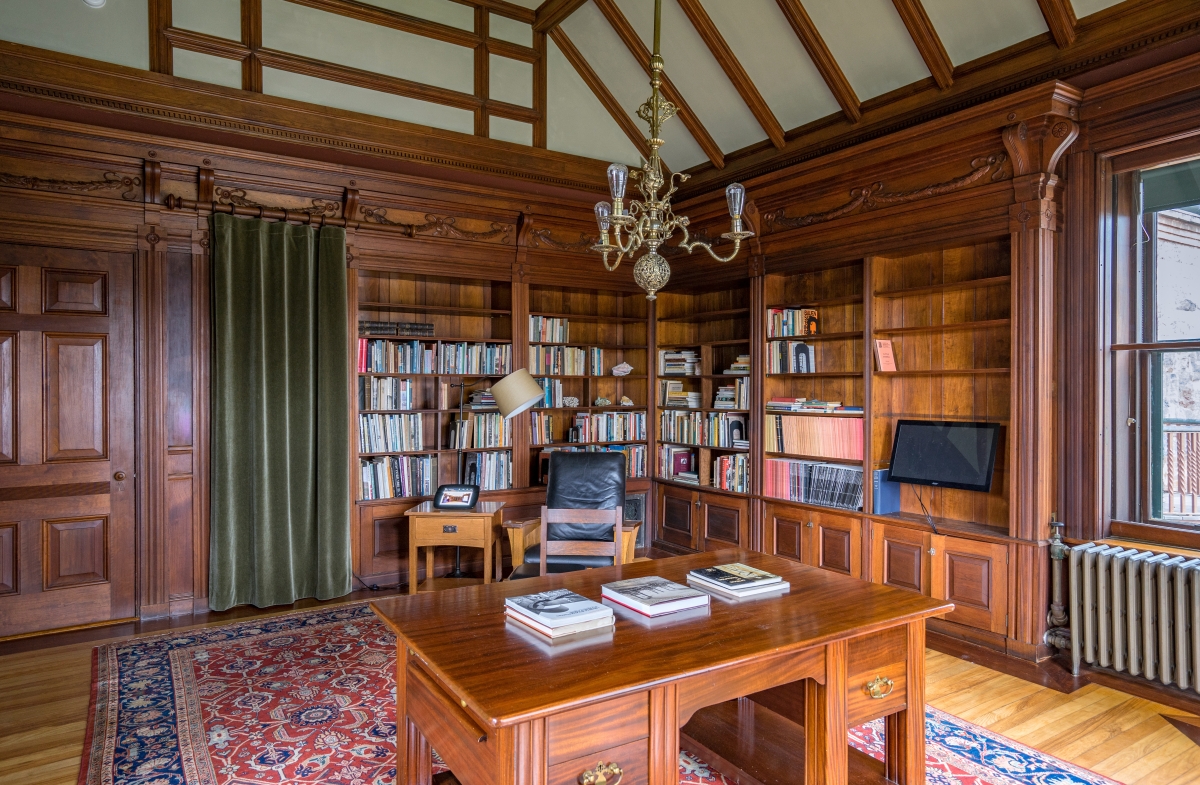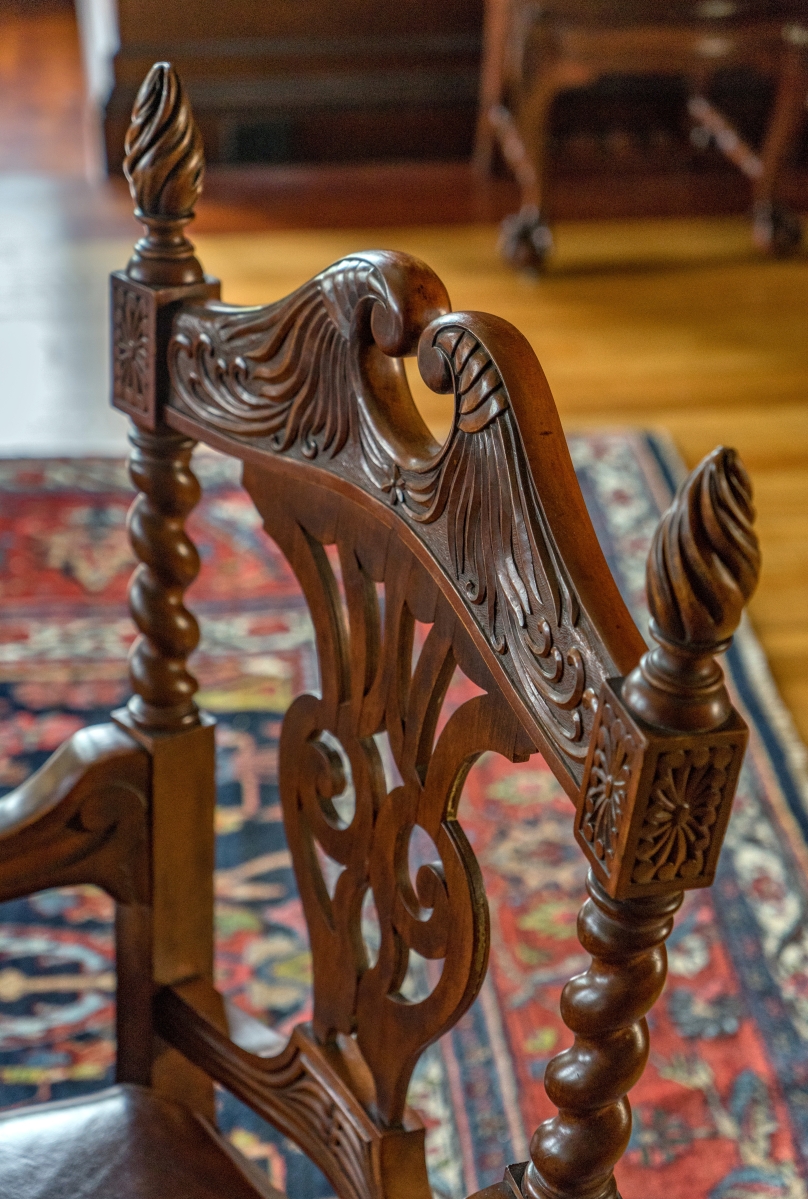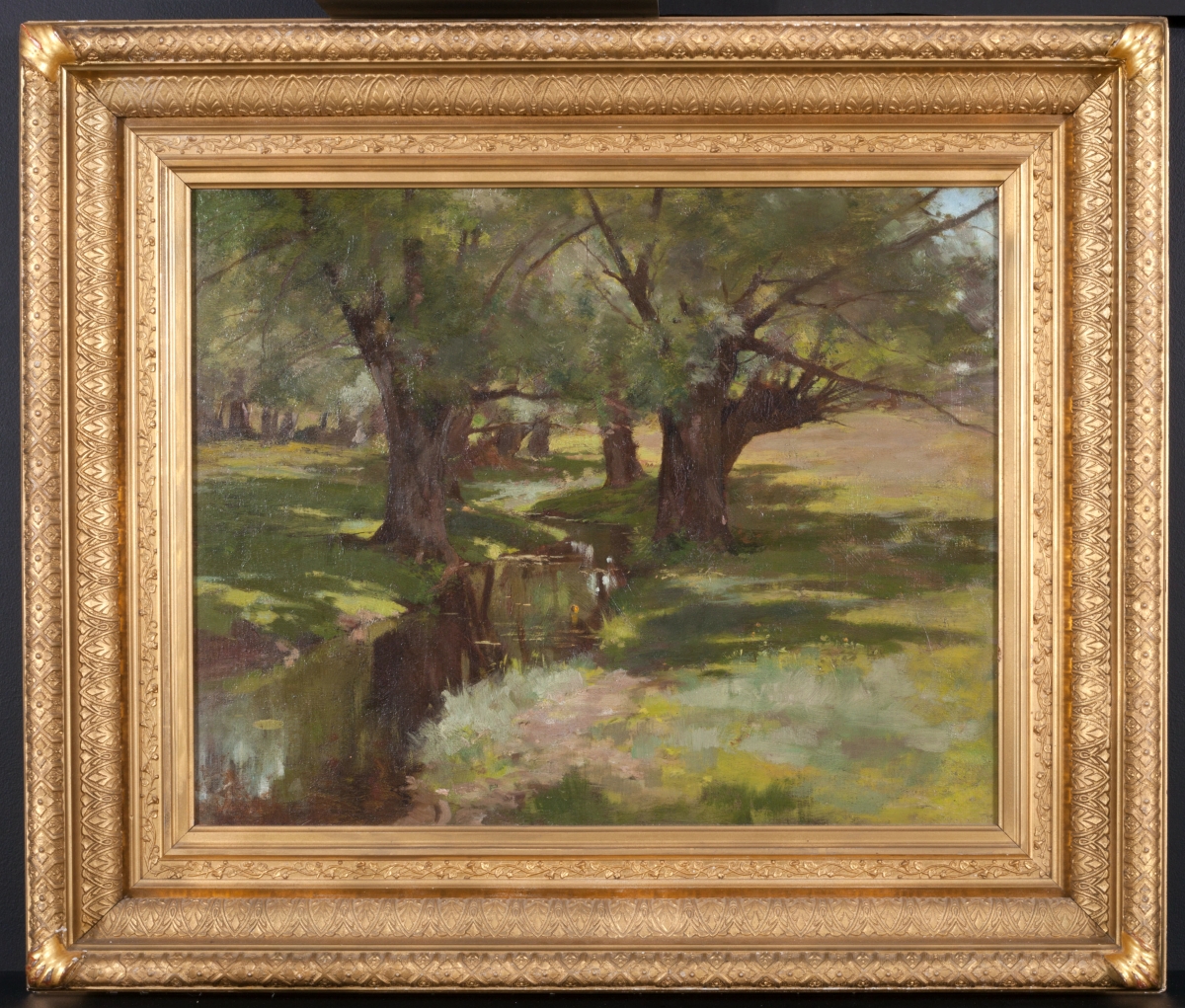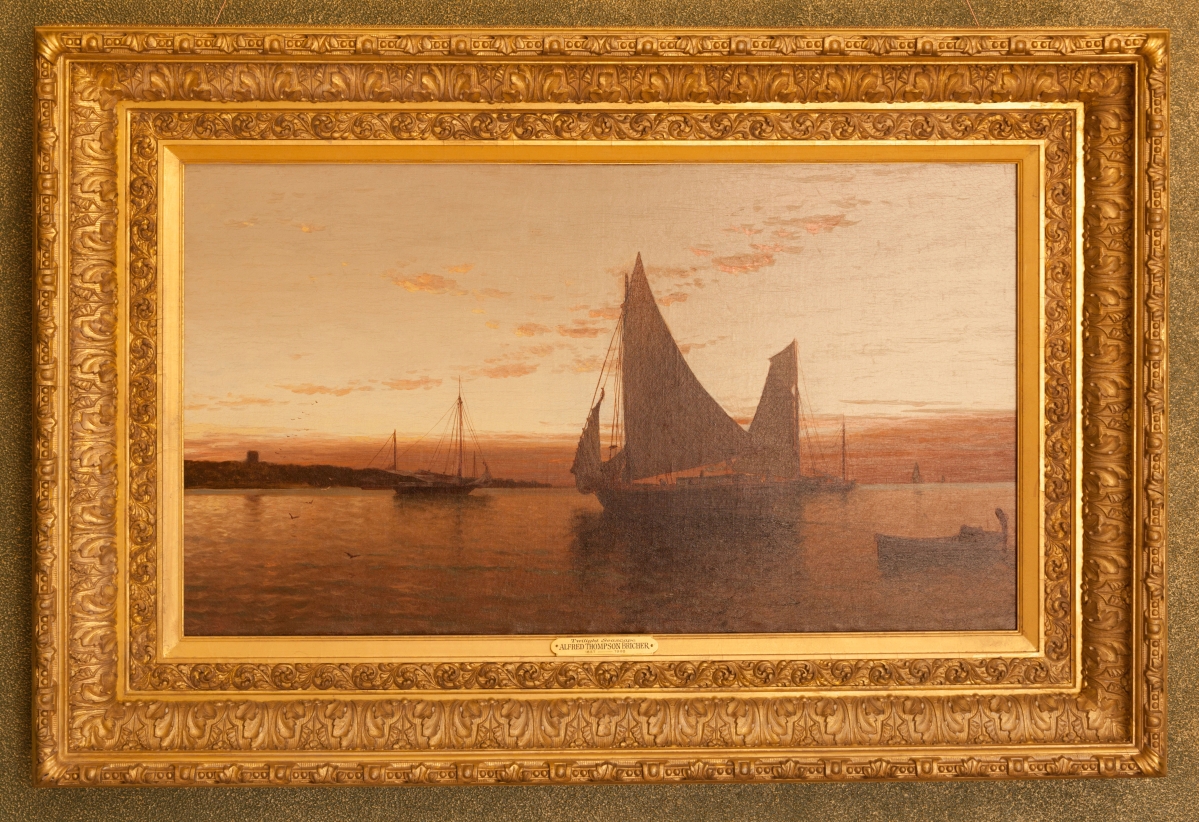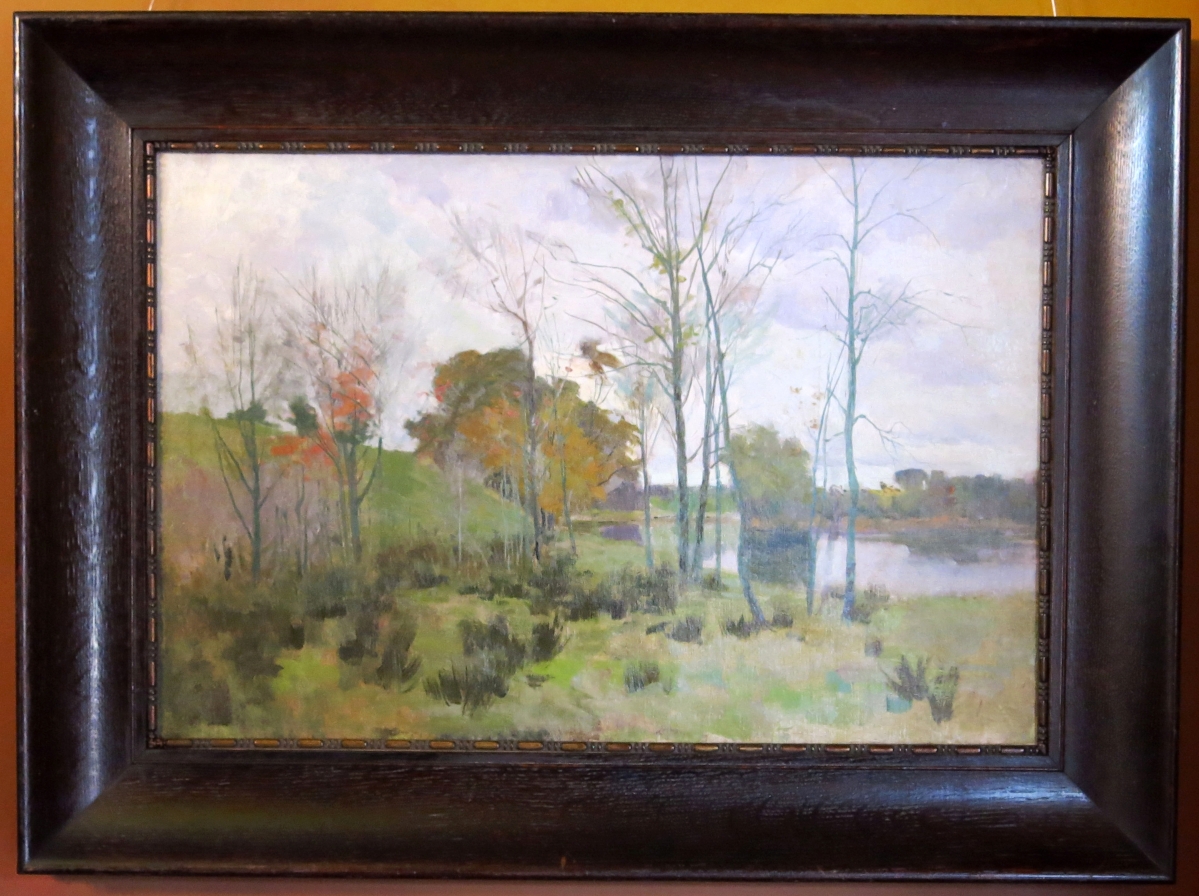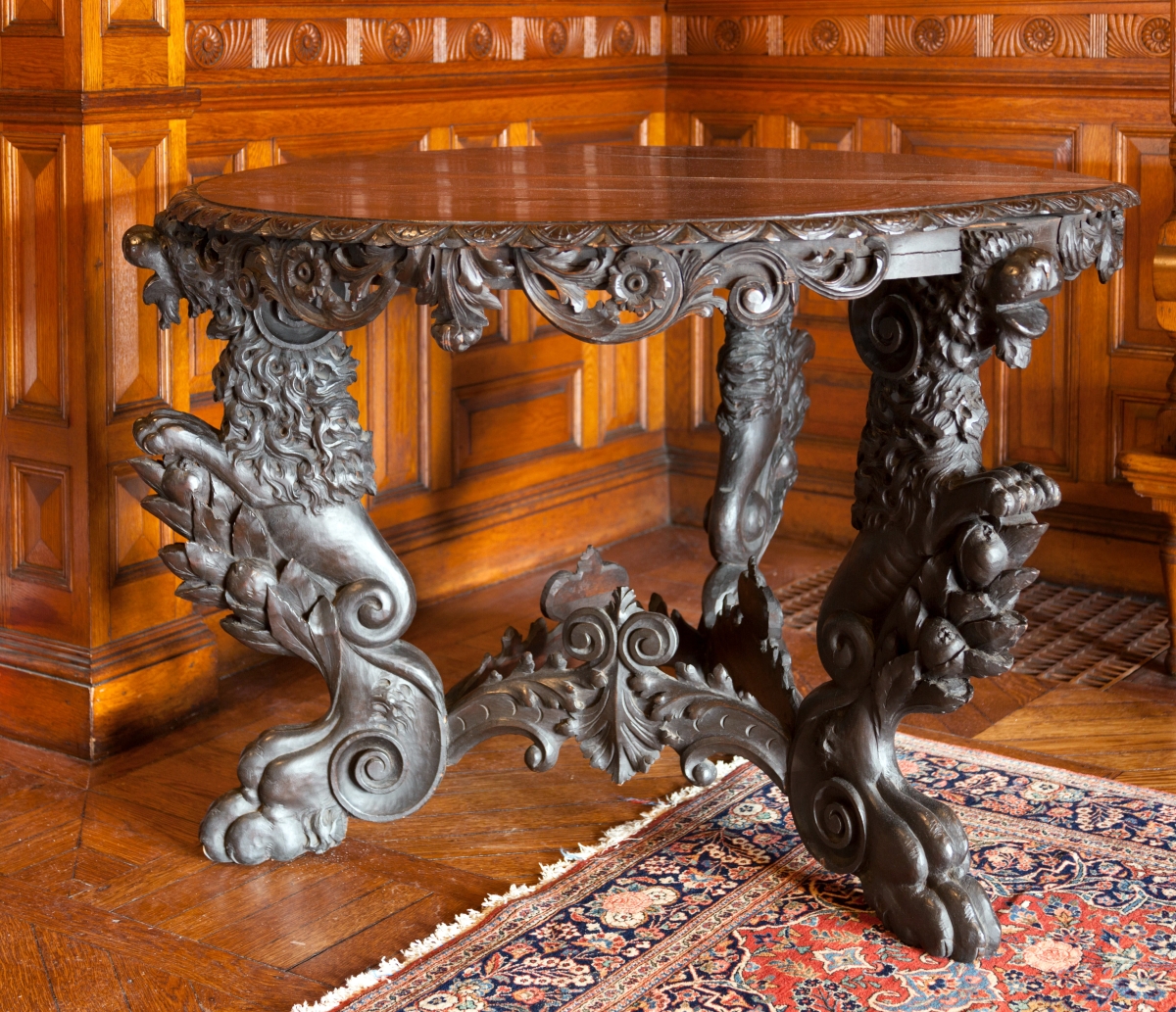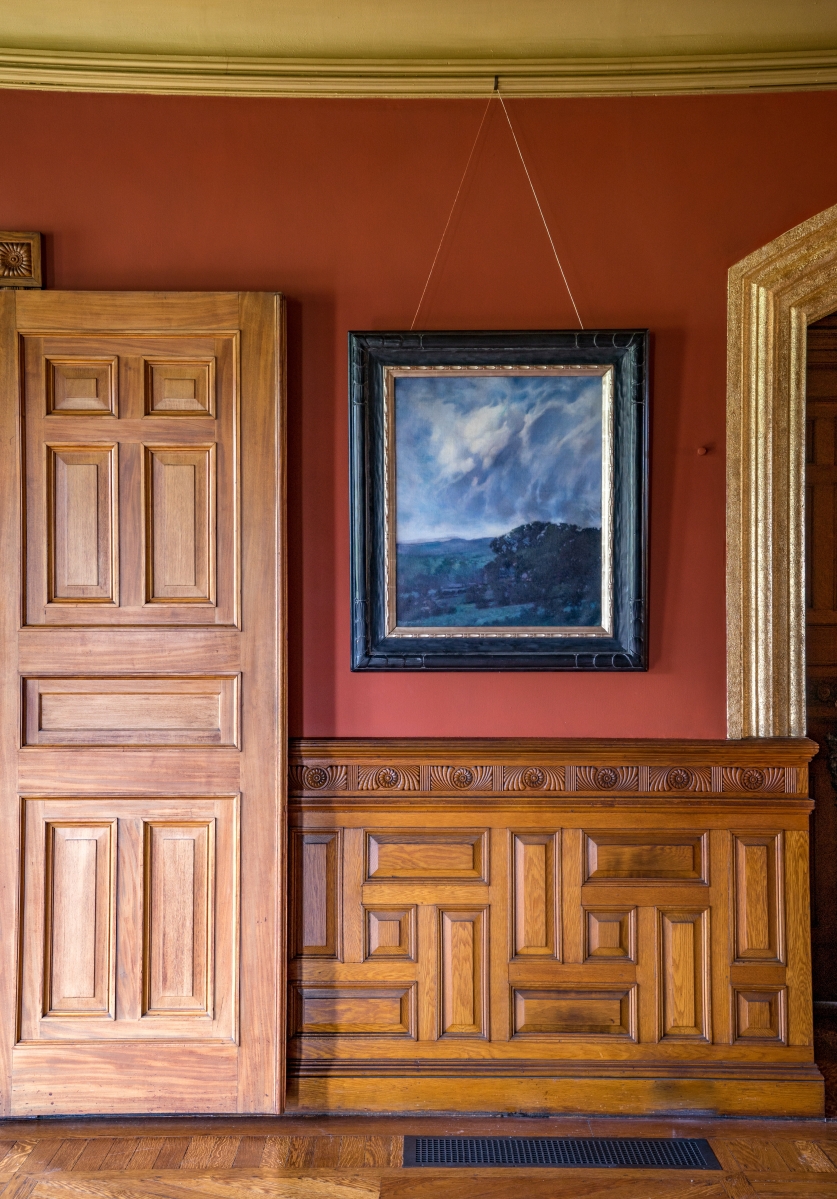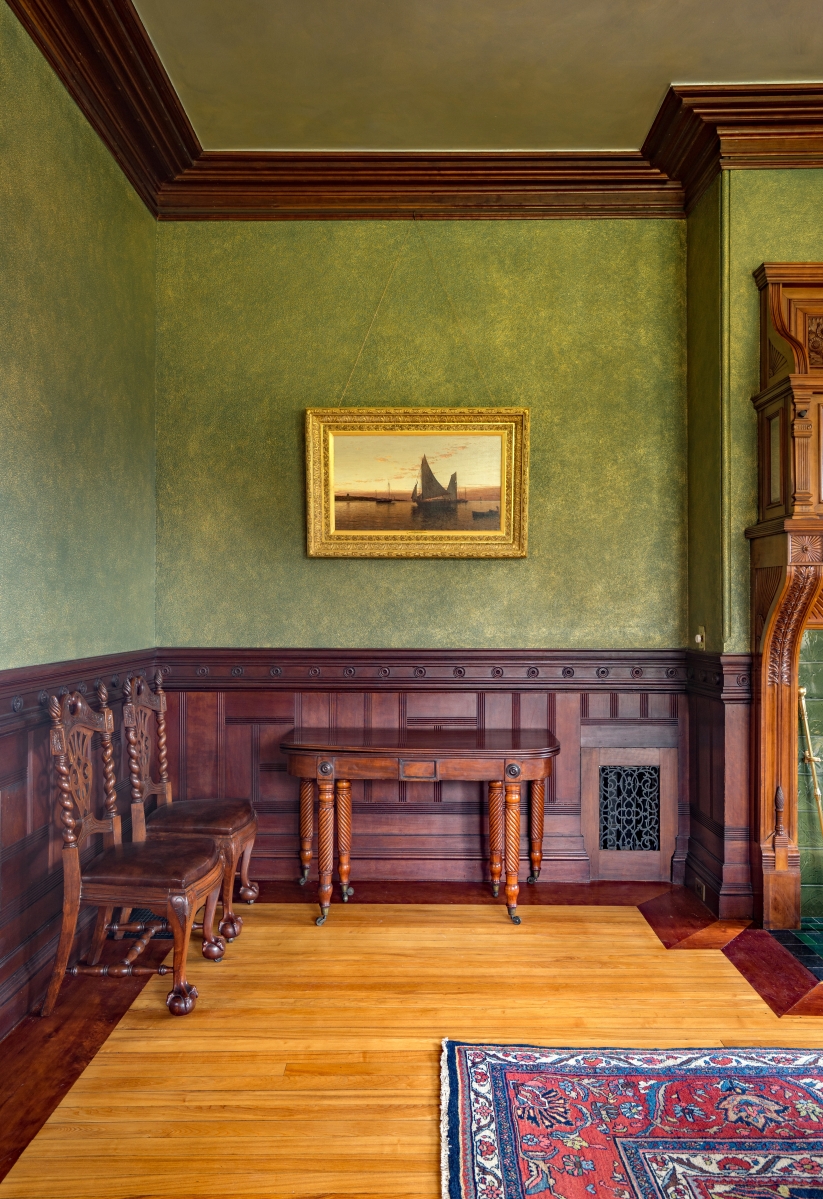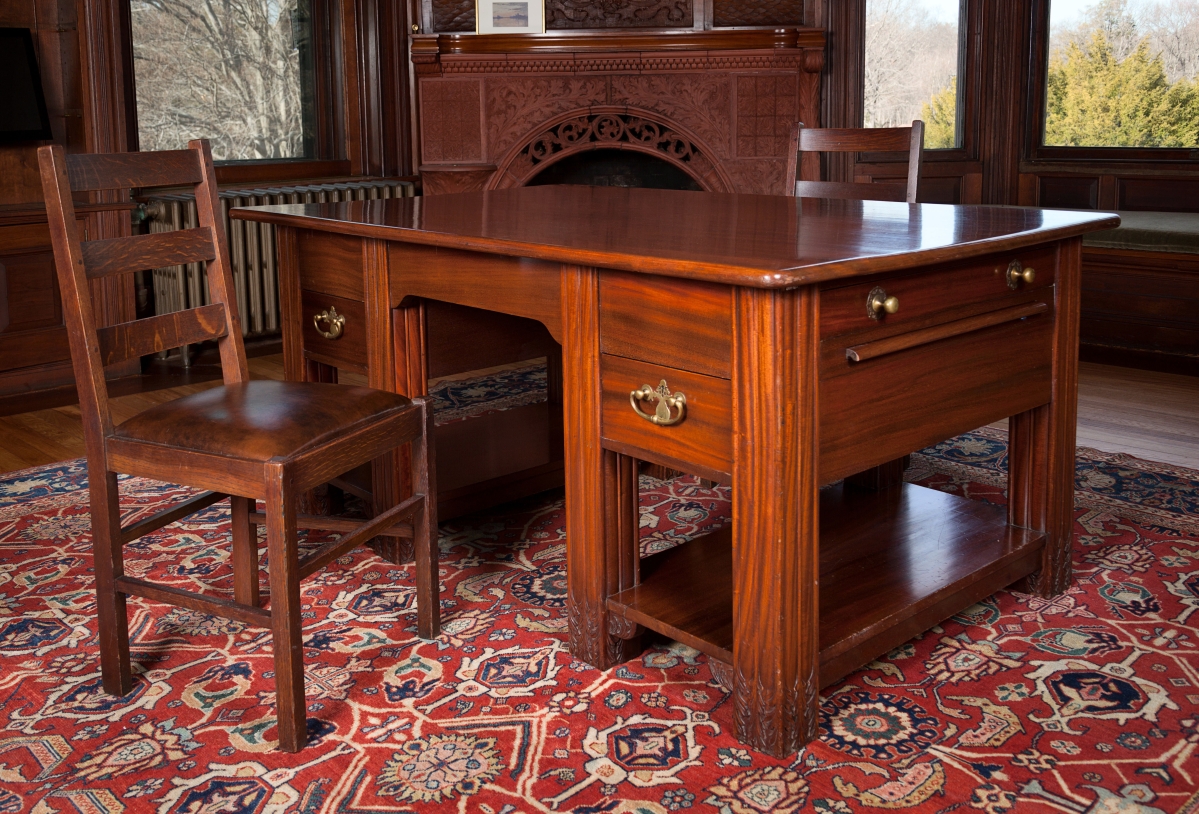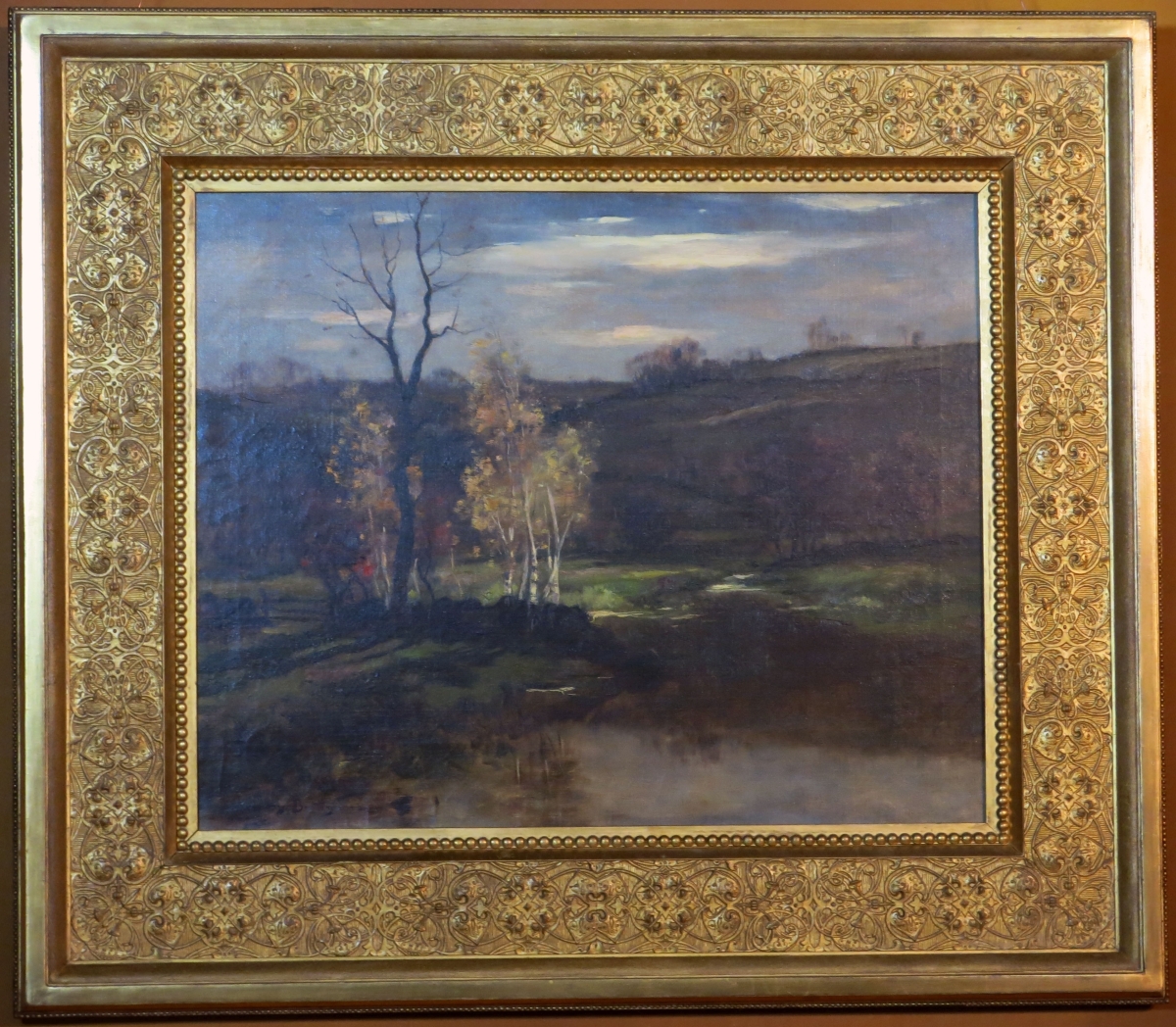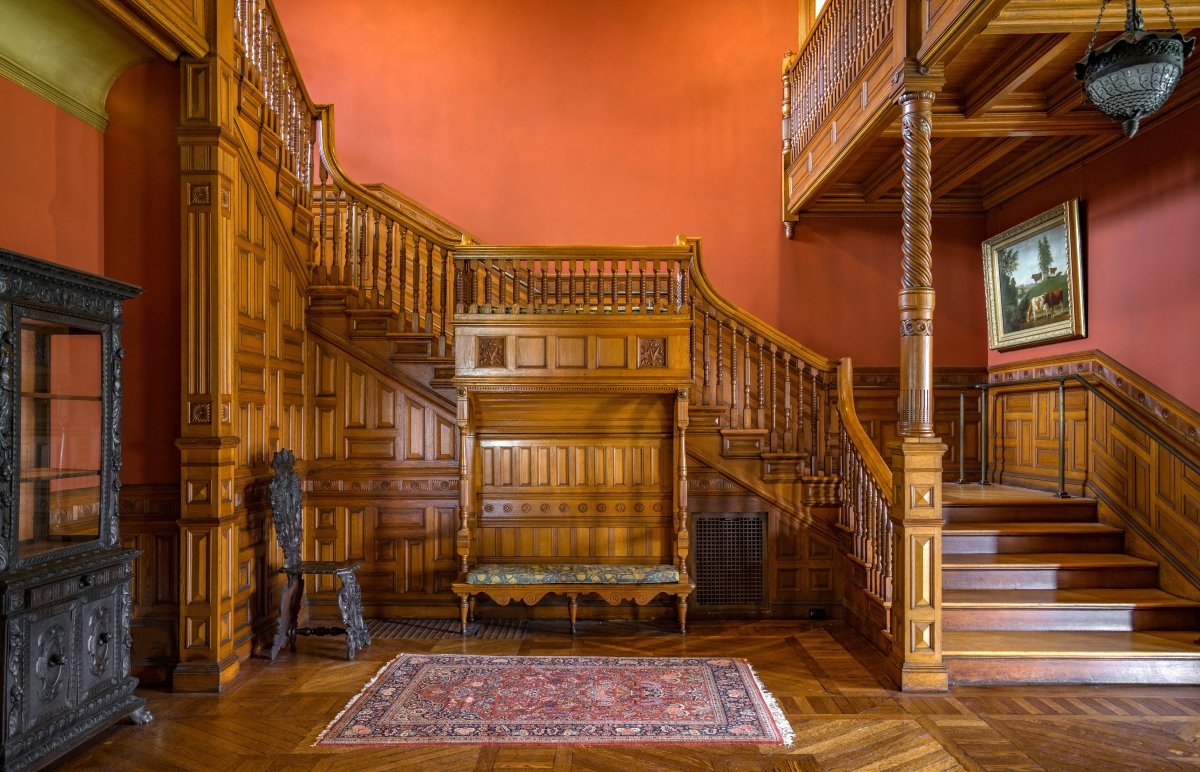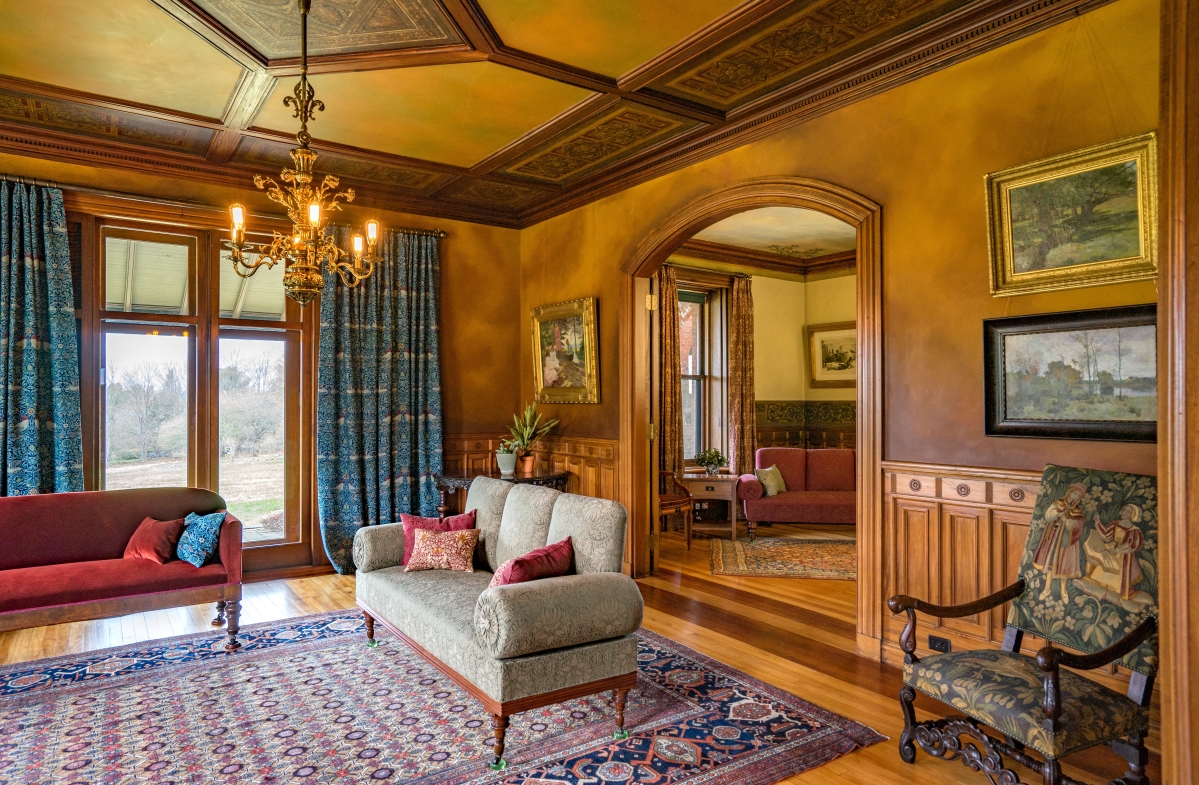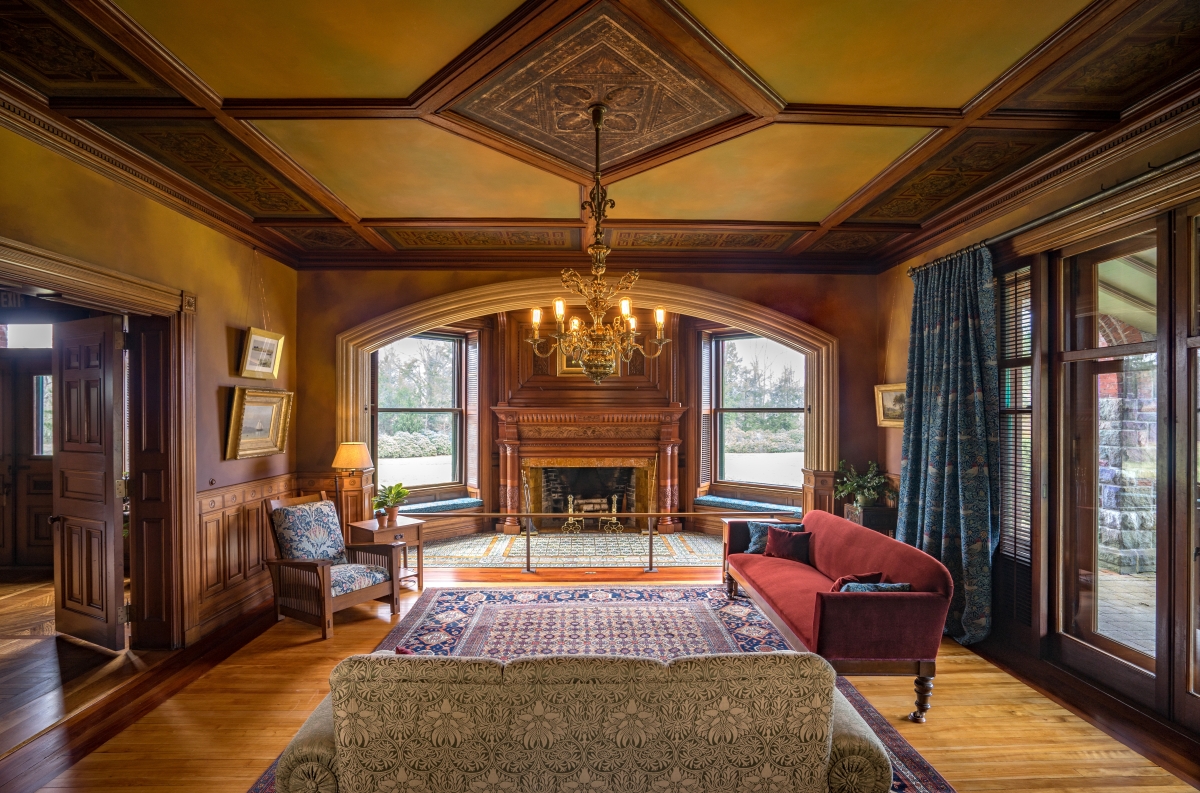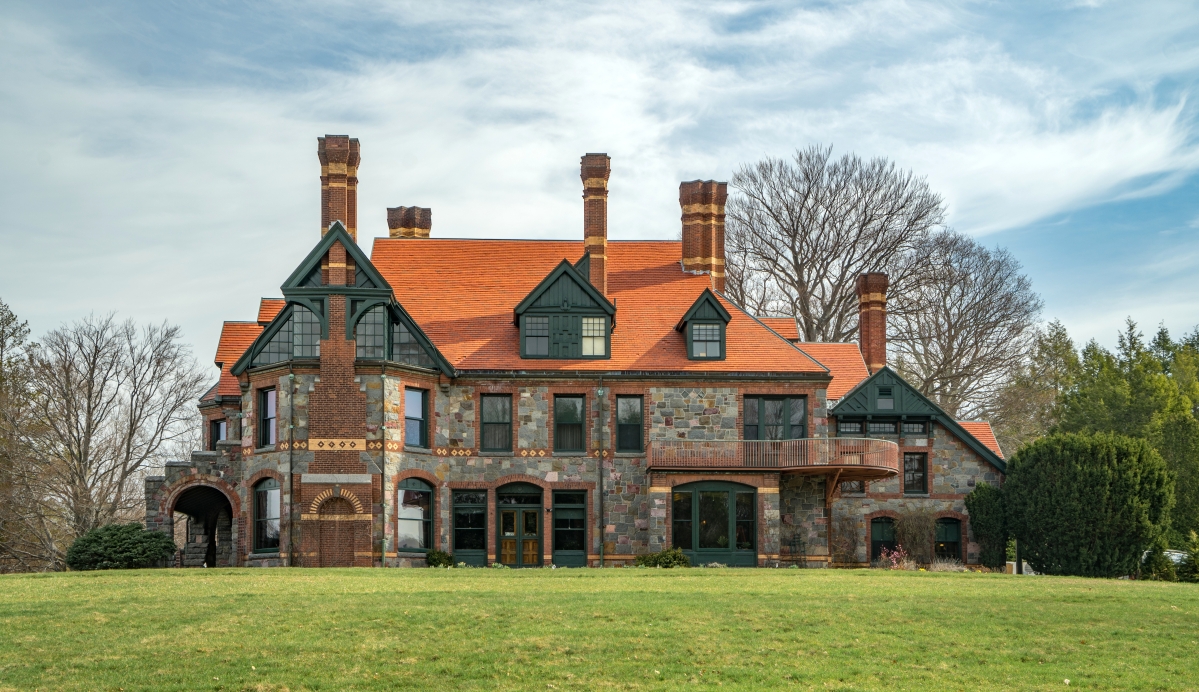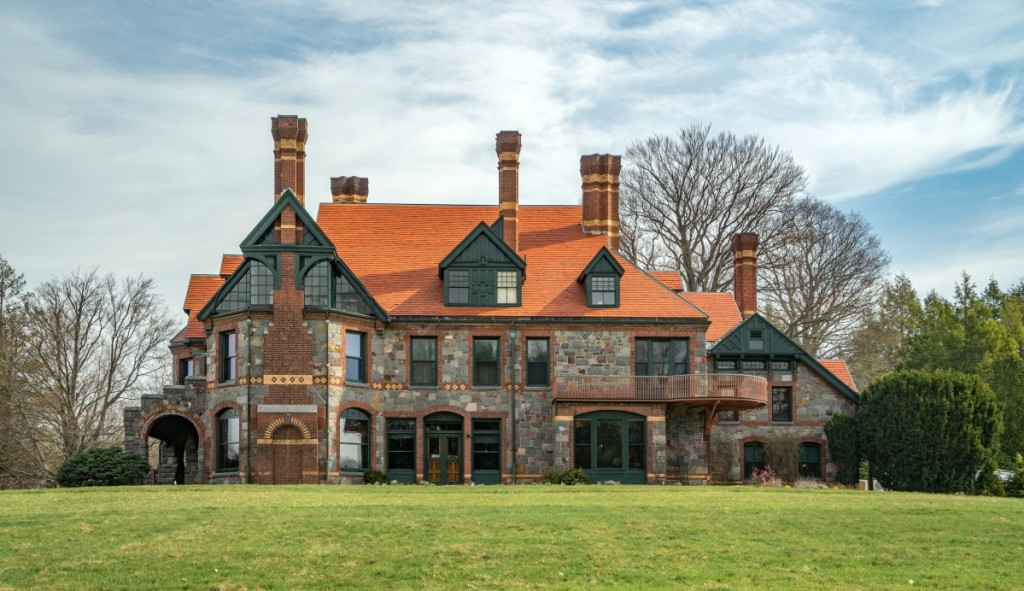
Architect William Ralph Emerson, a distant cousin of the Transcendentalist, completed his plan for the Eustis House in 1878. Emerson sited the romantic, asymmetrical structure on a rise that afforded its occupants a 360-degree view of the landscape designed by Ernest Bowditch.
By Kate Eagen Johnson
MILTON, MASS. – “What is most compelling is the exterior and interior architecture. It is a spectacular example of the Aesthetic Movement in New England,” said Nancy Carlisle, senior curator of collections at Historic New England (HNE), emphasizing the structural glory of the newly opened Eustis Estate Museum and Study Center. Built in 1878 for William Ellery Channing Eustis and his family, the manorial residence, which mingles Queen Anne and Richardsonian Romanesque style, was designed by William Ralph Emerson (1833-1917). It serves as the centerpiece of an 80-acre complex HNE purchased from a descendent in 2012.
The survival of only a portion of the building’s original furnishings, combined with HNE staff members’ desire to offer a more open and flexible tour experience, has led to fresh approaches for the organization founded in 1910 as the Society for the Preservation of New England Antiquities and currently responsible for 41 properties, 37 of which are publicly accessible.
Describing her role as “setting the stage for the story we wanted to tell,” Carlisle took her lead from the estate’s remarkable architecture when outfitting rooms lacking their original furnishings. She told, in so many words, how she selected aesthetically powerful and temporally appropriate paintings and objects, bold reflections of late Nineteenth Century design’s eclecticism, historicism and color.
“Especially during the last 30 to 40 years, all the properties acquired by Historic New England came complete with family collections… In the case of the Eustis Estate, only some of the original furnishings were sold with the house. Those were for the entrance hall, the dining room and one of the bedrooms. So, we are talking about three of 20-plus rooms,” Carlisle said, offering some of the backstory. A few interior photographs and snippets of family remembrances provided a bit more information, but far from the full picture.

Ultimately, the gaps proved freeing. Carlisle and her colleagues decided to “honor the original vision of the house” by installing fine and decorative arts objects that were in sympathy with its “forward-looking character for the late 1870s.” In addition, they have created a museum environment where visitors determine their own paths and experiences. More about Eustis Estate Museum’s new interpretive features in a moment, but suffice it to say for now that preparatory activities included locating antique furnishings that were both historically accurate and able to withstand use. Carlisle worked with specialist dealers and consultants in the effort.
“This was definitely a collaboration between the commercial and the curatorial,” Carlisle said.
Examples of acquisitions illustrate the task-at-hand as well as the fruitfulness of these relationships.
Regarding art, no paintings belonging to the Eustis family came with the house and Carlisle found nothing appropriate in the HNE collection. Essex, Mass., dealer Andrew Spindler, who serves on HNE’s collections committee, put her in touch with Sandra Lepore of Lepore Fine Arts Gallery in Newburyport, Mass. Together, they decided to look for paintings that were “more Tonalist and Impressionistic with an emphasis on atmosphere and light.” Carlisle called attention to a landscape dating to about 1880 by Laura Coombs Hills. “There were not many paintings by women in Historic New England’s collection and none by Hills. She was an important member of the Boston School and so this was a natural fit.”
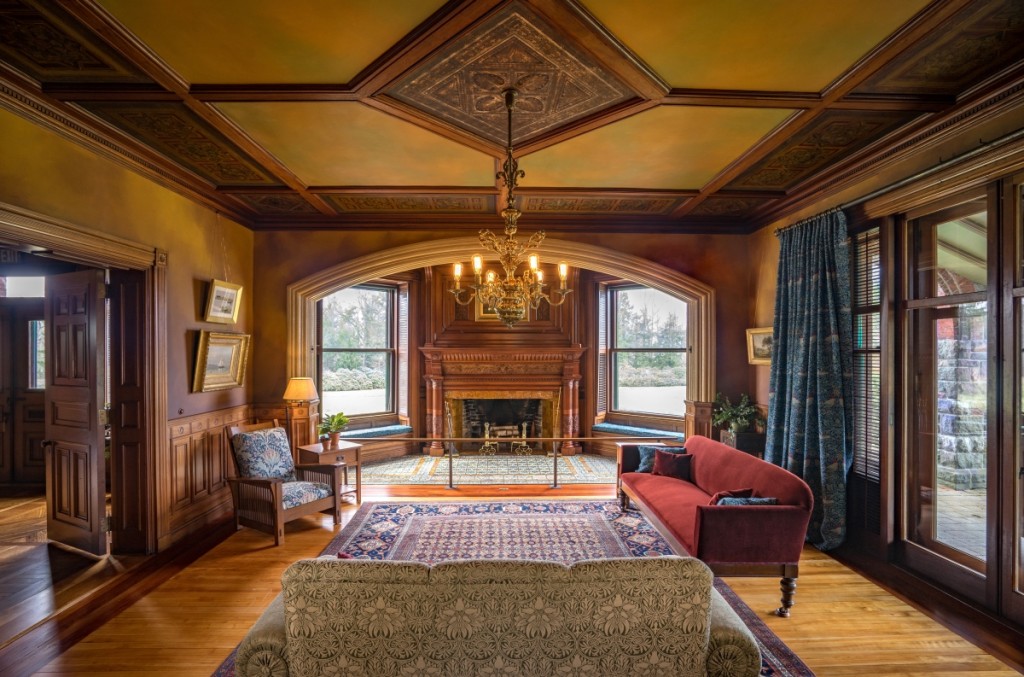
The large parlor was the main living room as well as a space to receive and entertain guests. The intricately carved fireplace surround is the focal point. Glass doors to the right provide light as well as easy access to the lawn and garden.
Carlisle also consulted with freelance curator Susan Danley. “It helped to see paintings with her and through her eyes.” They attended sales in Maine and New Hampshire mounted by Northeast Auctions, James D. Julia and Thomaston Place. A seascape by Alfred Thompson Bricher was acquired in this way. The subject matter reflects the Eustises’ interest in the Maine coastline, where the family had a seasonal home.
At New Hampshire Antiques Week, Carlisle met Mark Brock of Brock & Co., Concord, Mass. Through him, she obtained a small seascape by Wesley Webber and a painting by Arthur Wesley Dow. The curator remarked that “the Dow painting of an Ipswich scene is one of my favorites because Dow was connected to Historic New England early on. We have preservation easements on the house in which he was born in Ipswich and the house where he taught art in Ipswich. Like many other New England artists, he went to train at the Académie Julian in Paris, but, unlike other New England artists, he rejected its teachings. He saw its focus … as just copying.”
In her quest to find suitable art, Carlisle related that “the entrance hall posed a challenge. The Eustises had a vertical painting of Niagara Falls by William Morris Hunt hanging there. It was large and it held the space beautifully. What we would acquire to go there needed to be strong.”
She located such a painting at JMW Gallery in Boston. Titled “The Valley Below,” the canvas is by George Hawley Hallowell, an artist not previously represented in HNE’s collection. Carlisle explained that around 1900 “he was very well known and regarded by people such as Ralph Adams Cram and John Singer Sargent. Sargent owned eight of his paintings and considered him ‘the painter with the greatest power and promise in America.’ “
Carlisle underscored that the purchase of the half-dozen paintings not only enriched the Eustis Estate interiors, but also strengthened HNE’s late Nineteenth and early Twentieth Century art holdings overall. Turning to furniture, the curator made clear that the reserved taste of Bostonians, in evidence since the Seventeenth Century, would “never let them ‘go the extra gilded mile.’ They would not have engaged anyone like George Schastey or his ilk. For their Aesthetic interiors, they sought complementary furniture with a little less glitz.” Among the furniture firms the Eustises patronized was A.H. Davenport, the company Carlisle documented through her essay in the recently published Boston Furniture 1700-1900, edited by Brock Jobe and Gerald W.R. Ward.
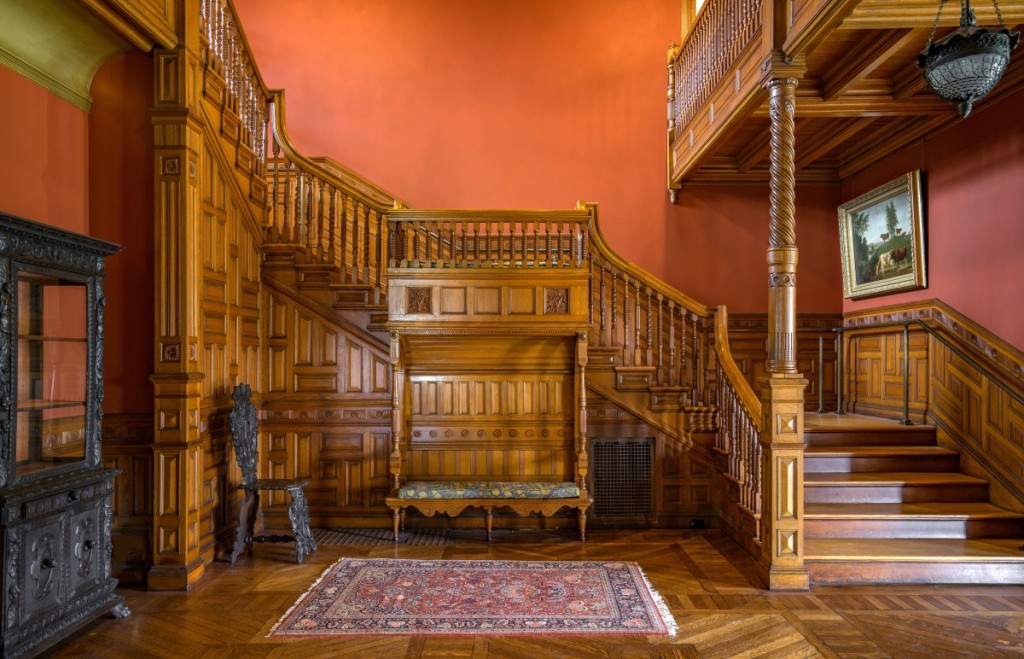
In the massive three-story hall, the carved woodwork and built-in benches are of oak. Paint analysis revealed the original red on the walls and green in the cove below the cornice.
Carlisle shared, “This was the first time as a curator that I had to install furniture that people would sit on and use. It had to be sturdy and of the right style… One of the best resources was here in Haverhill. We worked a lot with Paul Martin, who owns a huge warehouse of four floors filled with late Nineteenth and early Twentieth Century furniture. We bought tables and chairs from him.”
Carlisle declared, “One of my favorite chairs is a Tudor or Jacobean Revival chair, a type made in New England, New York and the Midwest. It has its original tapestry upholstery showing a man and woman in medieval dress playing musical instruments in a forest… Conservators removed and cleaned the upholstery, fixed the springs and reassembled it so that visitors can sit on the chair. This is ‘a signature piece’ for me because none of my colleagues would have ever gone out and purchased something like it, but it is perfect for this house.”
In regard to period lighting, Carlisle was introduced to Allen’s Antique Lighting of Harvard, Mass., by Mimi Findlay. Christopher and Cynthia Allen were instrumental in helping Carlisle make decisions about how to present the original chandeliers and sconces. During the house’s 1880 to 1910 focus period of interpretation, the fixtures would have initially been gas-fueled. In 1902, the Eustis family constructed a wind-powered plant to generate electricity on the property. They electrified lighting devices soon after that. The Allens found enough of the original globes of the dining room chandelier to show it as if lit by gas. The sconces in the master bedroom were outfitted similarly. In other rooms, reproduction Edison light bulbs have been deployed.
Textiles were an essential component of Aesthetic-period interiors. For fabric furnishings, Carlisle partnered with Nancy Barnard of HK Designs, Wayland, Mass. Barnard located appropriate textiles for upholstery and curtains, worked with weavers and seamstresses, and created a portiere for the second floor hall. Rug experts Michael Grogan, Jeff Arcari and Mehdi Khaledi helped find accurate carpets for many of the public spaces.
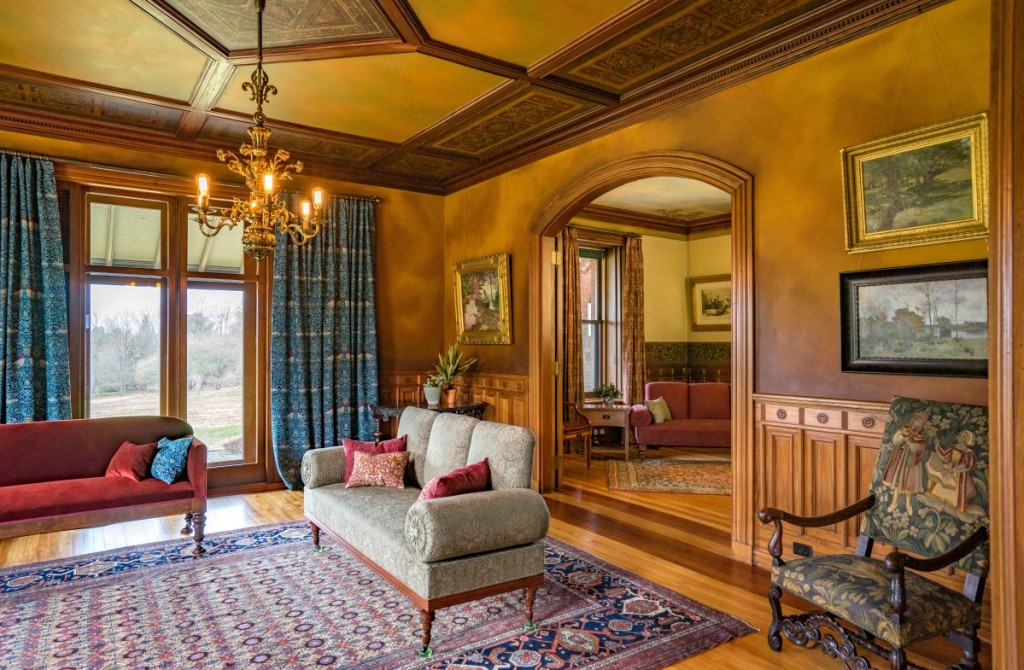
In the large parlor, the circa 1880 Dutch or German brass chandelier was likely installed when the house was built. It has been fitted with period-appropriate replicas of Edison-type bulbs. The sofa, a Eustis family possession, is upholstered in a reproduction William Morris “Crown Imperial” wool and dates to 1880–1900. The Tudor or Jacobean Revival armchair was probably made in Boston between 1870 and 1900. The 1920s Hamadan carpet is of wool, camel hair and cotton. The textile used in the portieres is a reproduction of Morris’s “Bird.”All objects identified in the photographs are in the collection of Historic New England. Photos courtesy Historic New England.
In sum, aside from applying her own deep knowledge of turn-of-the-Twentieth Century arts and design, Carlisle also drew upon the wisdom and talents of other specialists to pinpoint art and furnishings in perfect harmony with the building’s symphonic architecture.
The result is an enthralling historic property where visitors can investigate spaces devoted to diverse functions in a manner and on a route of their own choosing. They can see traditional “period rooms,” namely the dining room and master bedroom, that retain many original furnishings. In other interiors, they can happily rest on antique furniture designated as part of HNE’s service collection. These hands-on spaces include the resource room in the library where visitors are invited to settle in and peruse contemporary reference books on the history of New England architecture, arts and design.
In addition, the Eustis Estate and Study Center also contains an area for changing exhibitions, HNE’s first such dedicated gallery space. The handsome inaugural exhibition, “Mementos: Jewelry of Life and Love from Historic New England,” created by associate curator Laura Johnson, is on view through January 7. Future exhibitions include “From Head to Toe: Four Centuries of Hats and Shoes from Historic New England’s Collection,” scheduled to open in June 2018 as part of the yearlong “Mass Fashion” initiative inspired by the “Four Centuries of Massachusetts Furniture” collaborative, according to Johnson.
Visitor experience team leader Peter Gittleman showed how museumgoers can access the impressive Eustis Estate web-based application, or app, during and after the time they spend onsite (URL: eustis.estate). Live guides are also present to answer questions and to conduct house tours.
Carlisle reflected, “At Historic New England we have considerable expertise in the history of domestic settings and we are letting that combined knowledge shine through this project.” Without a doubt, museumgoers are connecting with the Eustis Estate’s genuine and engaging atmosphere. Gittleman reported, “Visitors keep saying to us, ‘For a couple of hours, I felt as if I lived there.'”
The Eustis Estate Museum and Study Center is at 1424 Canton Avenue. For more information, 617-994-6600 or www.historicnewengland.org/property/eustis-estate-museum-study-center.
Kate Eagen Johnson is an expert in American decorative arts and an independent museum consultant, historian, lecturer and author.

